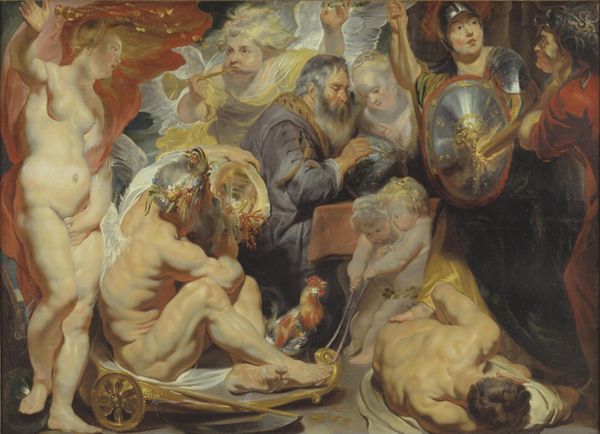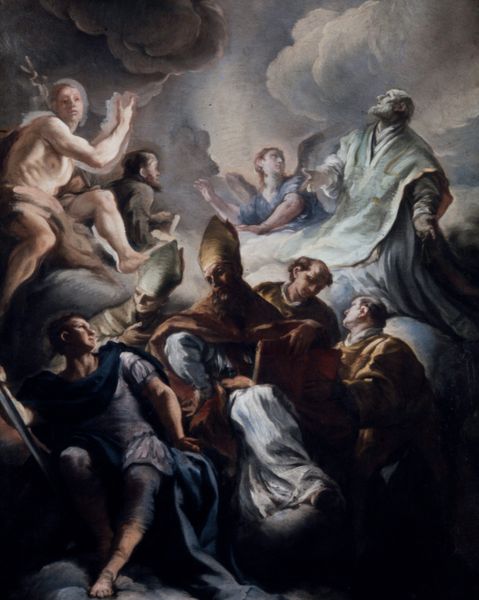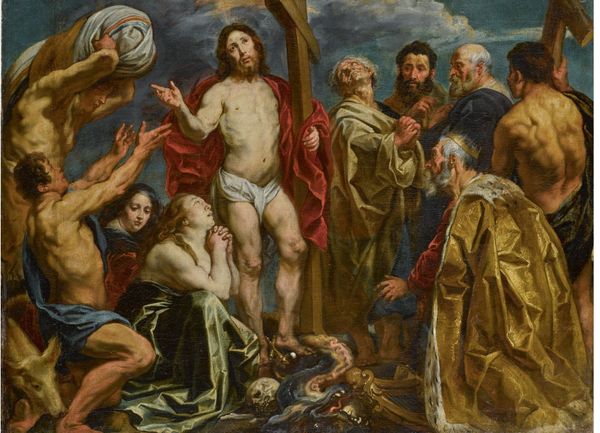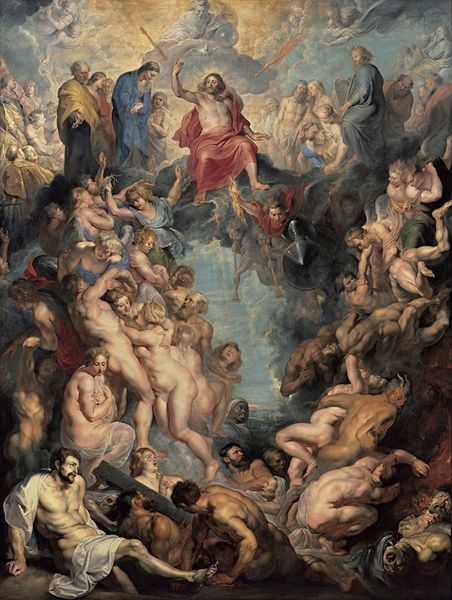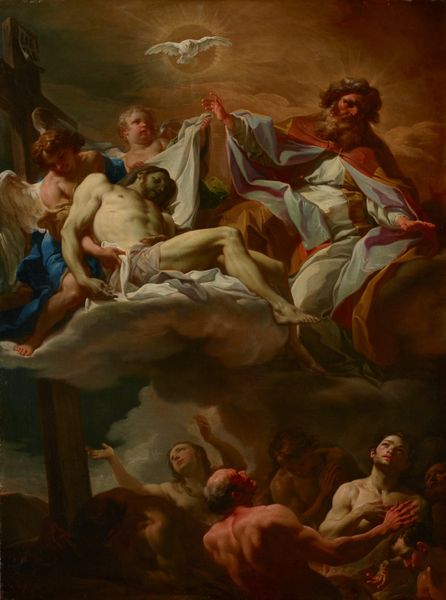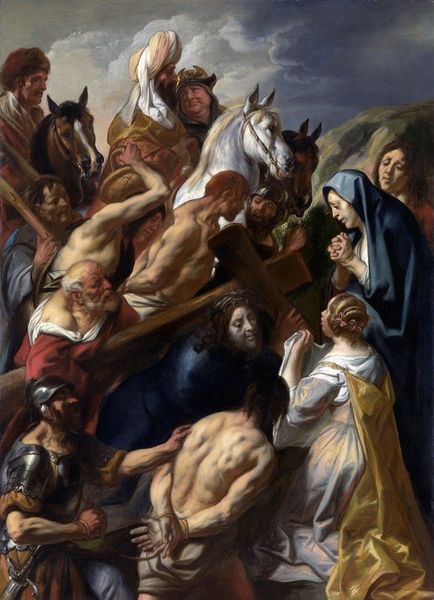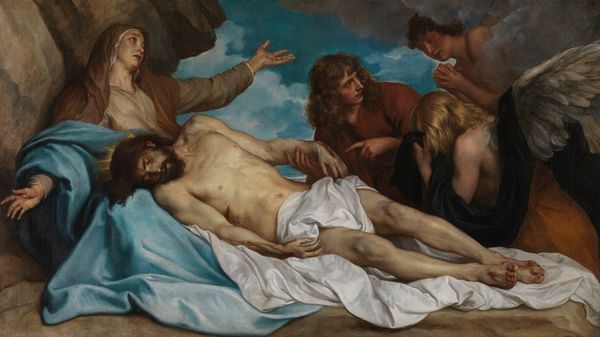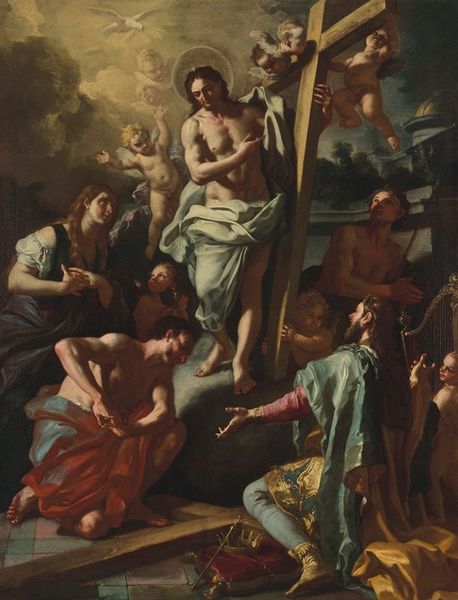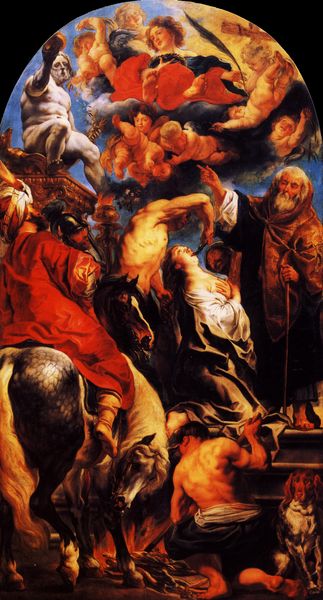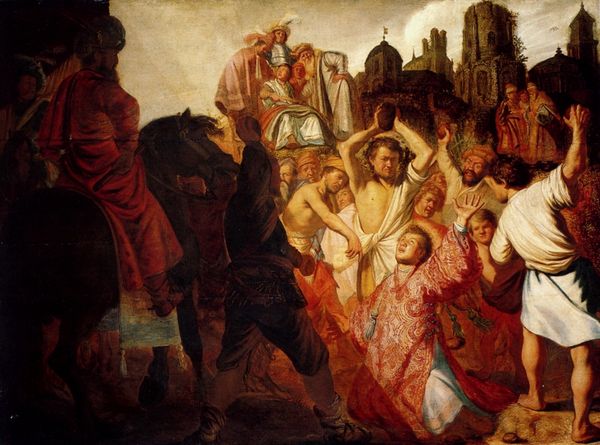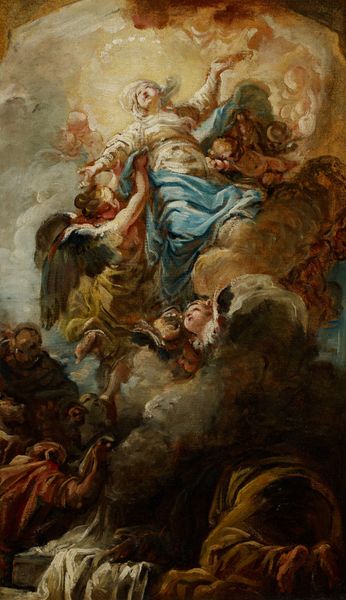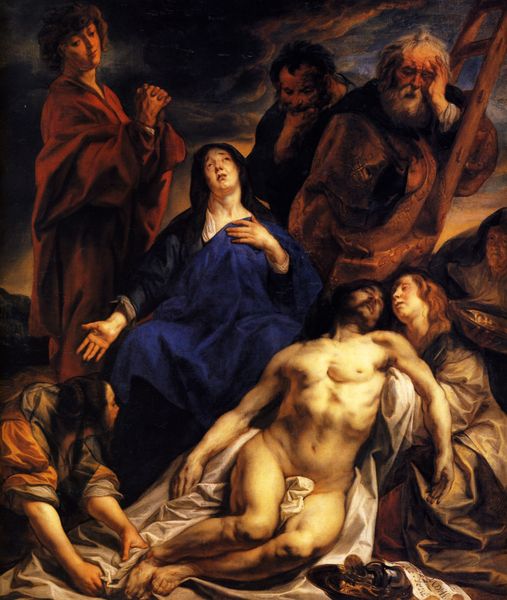
oil-paint
#
narrative-art
#
baroque
#
the-ancients
#
oil-paint
#
figuration
#
oil painting
#
flemish
#
history-painting
Copyright: Public domain
Curator: We're looking at "Moses Strikes Water from the Stone," a likely seventeenth-century oil painting attributed to Jacob Jordaens. The piece portrays a key moment from the Book of Exodus. Editor: My first thought? Wow, what a teeming canvas. All that desperation—you can almost taste the dust in the air, the yearning for relief. It hits you right in the gut. Curator: Exactly, the painting captures that intense intersection of faith and need. Jordaens presents us with Moses as this serene figure, set apart by his robe and gaze directed towards the heavens. Yet, the chaos and suffering of the Israelites surrounds him. Consider the patriarchal dynamics here, the way power is centralized. Editor: He's like a rock of stillness in this frenzy. Look at the dramatic gestures, the sheer humanity etched into each face, those contorted poses—it's almost theatrical, don't you think? Kind of beautiful and horrifying all at once. That thirst...it's palpable. I can’t help but imagine it; feeling that kind of raw, bodily urge takes me to this primeval, primal place. Curator: Baroque paintings thrive on drama, definitely. The lack of clear dating invites speculation on its original context—was it meant to reinforce faith, illustrate divine power, or perhaps, offer a commentary on social hierarchies of the time? Who has access to the life-giving water is quite significant. Editor: Access...It reminds you of current inequities too, doesn't it? It seems the human condition always cycles back. That makes it more than just an old story on canvas; it’s kind of timeless. If that stone represents a barrier, Moses finds a crack, some conduit of possibility...it’s still a story people yearn to hear, feel, and see acted out again and again. Curator: Certainly, the painting invites reflection on how leadership, divine intervention, and communal survival intertwine—across any century. I am sure audiences draw links between contemporary conflicts, resources access, and human rights violations. Editor: It also invites me to be grateful. Which is really powerful stuff. Curator: Indeed, the impact lies not only in its art-historical significance but also in its ongoing resonance in our times. Editor: A resonant echo from the past. Cheers to that.
Comments
No comments
Be the first to comment and join the conversation on the ultimate creative platform.
